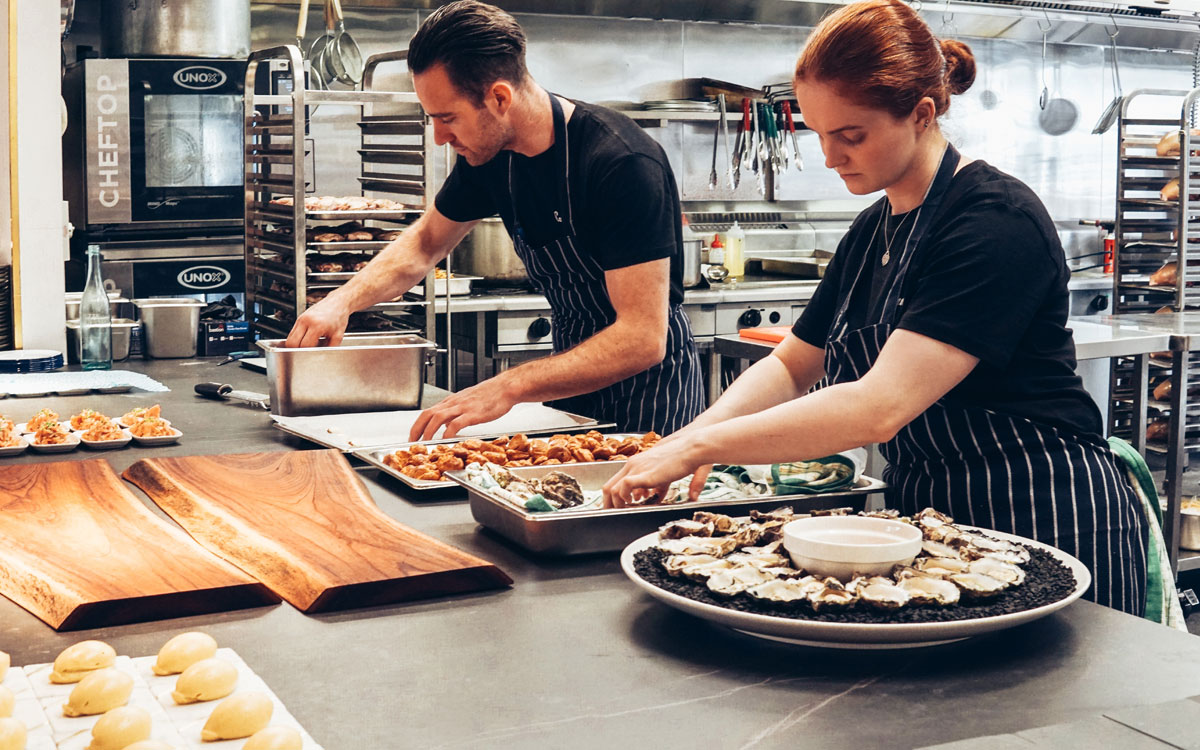




In any restaurant kitchen, a speedy and efficient service should always be a top priority to ensure food is prepared and served on time—leaving customers feeling happy and satisfied. While from the outside, commercial kitchens can appear chaotic and disorganized, the reality is they’re well-oiled machines that are primed to cope with the notoriously fast-paced demands of the job.
To always offer a five-star service, the kitchen workflow needs to be precisely and successfully tuned to deliver smooth-running operations, from the materials and equipment used in the kitchen to the inventory management methods. Here are a number of ways you can optimize your back-of-house workflow, to ensure you never let a customer or your team down.
The menu is one of the most defining factors for enticing customers into your restaurant, so it’s essential your kitchen has the capability to serve up everything it offers to ensure customers get exactly what they came for. With this in mind, the first place to start is to carry out a thorough check of inventory—ensuring your back-of-house team has everything required, from spices and herbs to core ingredients.
Avoid the embarrassment of explaining to customers that you’ve run out of certain dishes during a busy rush by implementing an accurate inventory system. Using this system, you’ll know when you need to restock, and when you don’t—which will mean your kitchen will also limit wasting food. Bolster inventory management by keeping a regular check on standard orders, it’s an efficient way to minimize over ordering, particularly if you’re planning on changing your menu.
If you find certain foods don’t sell well and are being wasted or some ingredients in your stockroom are costing too much, it could be time to streamline your menu. Finding the balance between profit and the needs of customers isn’t easy, but honing your menu and inventory to cater to your budget with popular selling dishes, could be one way to ensure you use up fresh ingredients and reduce waste.
Without a well-equipped kitchen, your team won’t be able to provide a slick and streamlined service. All equipment should be designed for use in commercial cooking environments, which includes a commercial refrigerator, sufficient preparation areas, basic kitchen supplies and a commercial dishwasher. Appliances need to be powerful and robust enough to handle the daily demands your restaurant kitchen brings, so investing in quality equipment will build the right foundations for delivering exceptional service.
Storage also plays a key role in the efficiency of your kitchen—so ensure there’s ample space for all equipment and food supplies. From under-counter fridges to walk-in cupboards and glass door units, you’ll need to keep these areas well organized and clean to optimize the food preparation process at every level
While it goes without saying that safety should always be put first, keep heavy boxes from toppling over by placing them on the lower shelves. In the event of spillages, opting for practical tiled flooring in a light color with non-slip properties will mean they’re easier to clean, safe and dirt will be more visible, while mosaic tiled splashbacks will provide the perfect low-maintenance protection to walls—ensuring outstanding hygiene standards are maintained.
When under pressure, it’s often easy to assign tasks to team members, forgetting about their specific skillset, simply to get the job done quickly – but this may not be the most efficient way to operate and could impact the quality of the food and service. Take the time to listen to staff and take their recommendations on board—you could see quicker turnaround times and improvement in the quality of results, as well as customer service.
This could mean small changes such as assigning an employee to a certain area of the kitchen or streamlining your menu to suit your staff’s capabilities and specialist skills. To outline the changes you’re making, create an employee manual to communicate standard operating procedures to maintain consistent quality and service levels. With everyone aware of their responsibilities and processes, things should run more smoothly on a day-to-day basis by optimizing work-flow according to your team’s abilities, as well as providing opportunities for them to upskill.
Through minor improvements over a long period of time and fine-tuning the smaller details of each facet of your kitchen operations, the process of optimizing your back-of-house workflow doesn’t have to be overwhelming. Taking the logical steps outlined above, you can be confident that you’re on the right track for delivering high levels of service at all times—leaving staff and customers happier than ever.
Suhayl Laher works at Tiles Direct, a large independent tile distributor and retailer—bringing design inspiration to homeowners, architects and developers.










